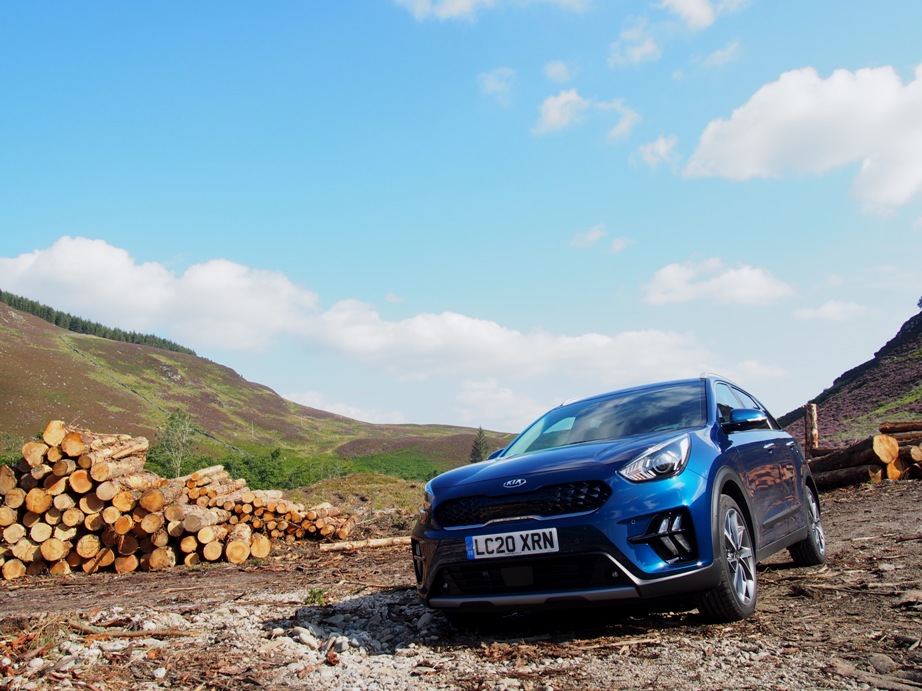Kia Niro 1.6 GDi HEV …
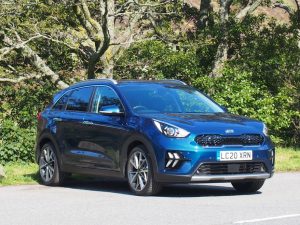 You’d be hard pushed to detect that the new Kia Niro is a hybrid. It does everything at least as good as, if not better, than a ‘normal’ car. Although it looks like a sport wagon / estate car / hatchback that can’t make up its mind if it’s an SUV or not, the result is a pleasing looking car with plenty of room inside.
You’d be hard pushed to detect that the new Kia Niro is a hybrid. It does everything at least as good as, if not better, than a ‘normal’ car. Although it looks like a sport wagon / estate car / hatchback that can’t make up its mind if it’s an SUV or not, the result is a pleasing looking car with plenty of room inside.
It’s four years since I drove the first Kia Nero Hybrid in 2016 and the technology has moved on mightily since then, and so too has this latest version.
The 1.6 litre 4 cylinder petrol engine develops 104 bhp and is backed up with a 32kW electric motor producing 43 bhp. However the petrol engine develops a more modest 147 Nm of torque whereas the electric motor generates 170 Nm. Combined power output is 139 bhp which is more than enough for this class of car. It’s still good for an 11 second nought to 60 dash and top speed of around 100 mph.
The parallel hybrid drive system enables the two power units to work together under normal road use, although the car is able to run in all-electric mode for short distances. Dashboard displays keep the driver aware of what is being used and when and also highlights the brake energy recovery system.
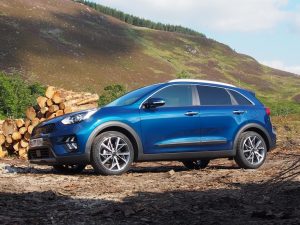 A six-speed auto dual-clutch automatic gearbox has been used this time and is much more preferable to the more commonly employed continuously variable transmission (CVT) in this type of drivetrain.
A six-speed auto dual-clutch automatic gearbox has been used this time and is much more preferable to the more commonly employed continuously variable transmission (CVT) in this type of drivetrain.
Kia claim a combined fuel economy figure of up to 58.9mpg, with CO2 emissions starting at 110 g/km, but this is all dependent on how and where the car is being driven. Folk who buy this machine thinking they are going to travel further for less cash need to properly assess their car use first.
High mileage users traipsing backwards and forwards on motorways won’t save anything, and in fact it might cost them more, but it offers a better option for commuting around towns and cities. That’s where the electrically assisted driving mode comes into its own, eking out fuel consumption and generating less CO2.
This became quite evident on the 240 mile return trip from Lanarkshire to Cumbria for the ‘M-Sport Return to Rally’ event. The Motorway drive was effortless but there was little chance to use or recoup and any electrical energy. Once off the motorway things improved but made little difference to overall fuel consumption. What this trip demonstrated is that although significant savings can be made on local commuting duty, hybrid power is not yet the answer for prolonged motorway use. Admittedly, it was great to drive on the Motorway, quiet and comfortable – but it would go a lot further with a diesel engine!
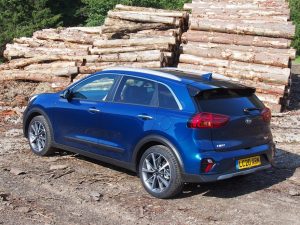 There was one other niggle. The SatNav. Although I knew where I was headed, the SatNav had other ideas, so since I was early on the road I decided to ‘take instruction’. What a roundabout route for a shortcut! At one point I turned off the main road as instructed towards Catterlen on to a very narrow side road with claustrophobic hedges. Not so much a village as an outpost on the very edges of civilisation. Anyway, as I turned in I came across a handpainted sign on the verge telling ‘SatNav followers, this route not advisable’. Intrigued, I carried on but anything wider than a Niro would have difficulty getting through.
There was one other niggle. The SatNav. Although I knew where I was headed, the SatNav had other ideas, so since I was early on the road I decided to ‘take instruction’. What a roundabout route for a shortcut! At one point I turned off the main road as instructed towards Catterlen on to a very narrow side road with claustrophobic hedges. Not so much a village as an outpost on the very edges of civilisation. Anyway, as I turned in I came across a handpainted sign on the verge telling ‘SatNav followers, this route not advisable’. Intrigued, I carried on but anything wider than a Niro would have difficulty getting through.
For the return trip, I ignored the very polite but insistent SatNav lady, and stuck to my own choice of route. It was two miles longer.
The other benefit for the driver is that the whole ‘dual-power’ business is quite unobtrusive. It behaves like any other normally aspirated vehicle as the electric motor doesn’t so much, ‘cut’ in or out, rather it just seamlessly matches the driver’s needs with the speed and traffic conditions required.
There are four trim/equipment levels available, and naturally, the new car comes with the latest electronic safety systems including Forward Collision Avoidance Assist, Adaptive Smart Cruise Control with Stop & Go, Lane Departure and Lane Keeping Assist on all models, with additional Blind Spot Detection and Rear Cross Traffic Alert standard on the top of the range models. The DAB radio is standard but again buyers looking for the better specced models can benefit from an eight-speaker JBL® sound system. It’s the same with the 10.25-inch touchscreen multimedia system and SatNav, these are available only on the more expensive options.
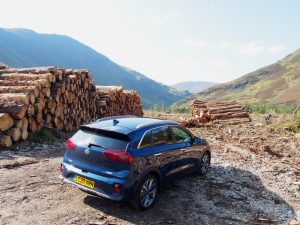 The Niro range starts from around £24,000 with self charging hybrid and plug-in hybrid versions as well as a fully electric e-Niro model.
The Niro range starts from around £24,000 with self charging hybrid and plug-in hybrid versions as well as a fully electric e-Niro model.
The test car was the self charging hybrid ‘3’ model, just one step below the top of the range ‘4’ and was equipped to a very high standard bearing in mind the £27,100 price tag.
Prospective purchasers will have to look at the specs and examine their own motoring needs before deciding which model suits best, but for the high mileage users, a diesel engine still provides the most cost effective and convenient tool for pounding the nation’s motorways.
For those with more modest needs, the Niro Hybrid could work out a lot cheaper than a fully electric car!
Kia Niro 1.6 GDi HEV ‘3’ 6 Speed DCT
Review Date: Aug 12, 2020
Price: £27,110 (as tested)
Engine: 1580cc, 4 cylinder petrol with 104 bhp + 32kW electric motor with 43 bhp
Performance: 0-62 mph in 11.1 secs, flat out at 101 mph
Economy: 54.3 mpg (combined)
CO2 emissions: 119 k/gm
